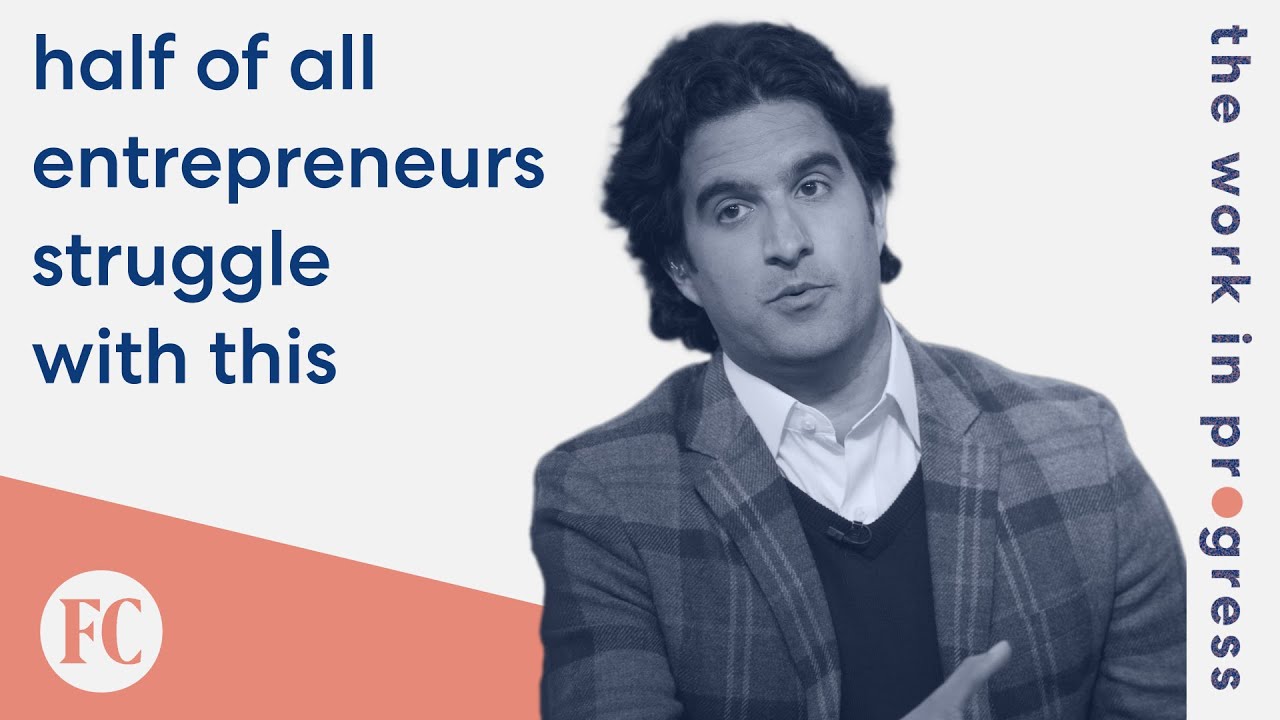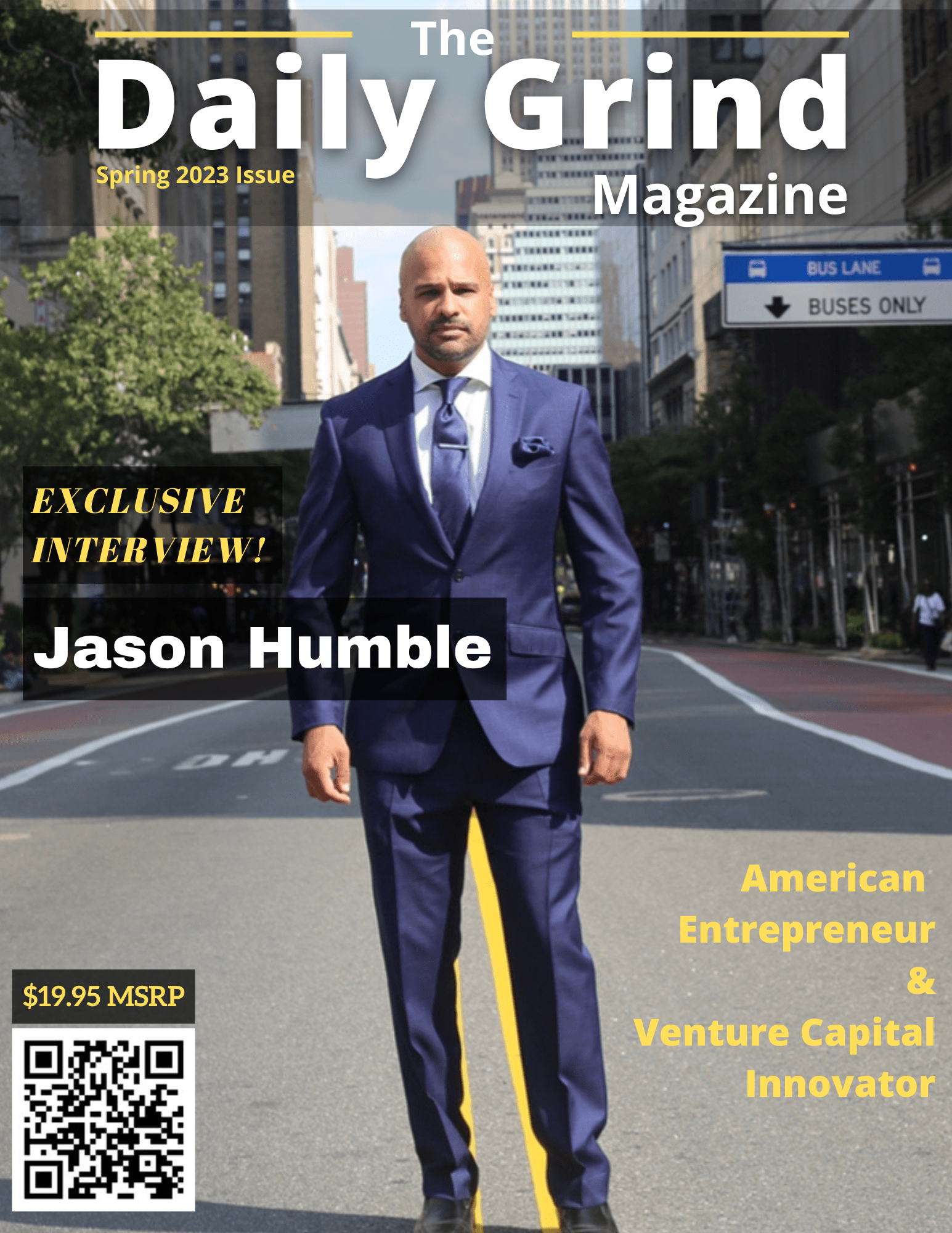(gentle music) – According to a study by Michael Freeman, Entrepreneurs are 50% more likely To report having a
mental health condition. Founders are also twice more likely To suffer from depression, Three times more likely to
suffer from substance abuse, Six times more likely to suffer from ADHD, And 10 times more likely to
suffer from bipolar disorder. In some extreme cases, founders and CEOs Have lost their lives Due to the unrelenting
pressure to succeed. I caught up with Bonobos’
co-founder, Andy Dunn, Who shared how his bipolar disorder Derailed both his personal
and his professional life. (bright music) Creating real systemic change
is a continuous journey That requires us to always
keep taking steps forward, No matter how big or how small. This is The Work In Progress. – Bipolar disorder is a mood disorder. It means that your highs can be too high And your lows can be
kinda catatonically low. I hid this journey, Which included two or
three manic episodes, Which is psychosis, Picture literally the person
quote unquote going crazy. And, then a lot of
depression, acute depression, Can’t get outta bed, suicidal
ideation, all of that. And, it too often intersects
with being an entrepreneur. – I have a quote of
yours that I wanna read. You don’t wanna let your team down. You don’t wanna let your customers down. You don’t wanna let your investors down.
You don’t wanna let your family down. You don’t want to let yourself down. That’s a lot of weight, But also think it’s the opposite is true. By disclosure, you’re actually
freeing those individuals From like, ah I thought
something was going on, Or just… Or freeing it for themselves To face their own their own circumstances. Tell me about this book. – Well, it’s funny what
you say about that. So, I sat down with a number of people Who I’m pretty close to
as I was writing the book Who I never talked to about this. And, I thought it would be
this momentous occasion. And, I remember telling a
friend of mine in New York, His name’s Jason, we went
to Stanford together, And he and I knew each other, And have for 16 years, And we’re really close friends. And, in New York, together socially, He filed the journey of Bonobos
from a business standpoint. And, I sat down and told him, And I thought it was this big moment, And he was like, uh-huh. He was like 0.0% surprised. And, I think that’s one
of the things about us Is people know us. They kind of, other people
know us frequently better Than we know ourselves. And, so, it’s not a big deal
to tell someone who loves you About what you’re dealing with. They’re not gonna be surprised, right? When it comes to mental health.
They kind of already know, It just gives it a name, And it gives you kind of permission To have a a friend support system too, Which we all need. – There was a comedian I watched recently Who said she told her best
friend about her mental disorder And he goes, it’s kind
of like a middle name. I knew you had one, but I
didn’t know what it was. It was like, that’s such
a great way of putting it, ’cause we all, like you said, We all have some form
of dysfunction in a way. Now, okay, so let’s take
this into the workplace. You, as a leader, right, Five years is still relatively new, right? And, how does that affect
your approach to leadership? I’ll give you a little anecdote. I started therapy a
couple months ago, again, And my insurance, for instance, Wouldn’t cover telehealth visits, But they would cover in person visits. I was like, it’s a pandemic. I can’t go. The additional stressor
was me on the phone With the insurance company And then trying to fit, And do I wanna pay extra money
just to pay outta pocket, And going through all that
decision making process, Or having a batch of employees That may need mental health services, How has that affected your
approach to leadership in… – Yeah, so how do we
create norms of disclosure? I think that’s step one. The second step is community, right?
So, we have these ERGs
in this day and age, Employee resource groups, Whether we call it that or not, Around so many other
elements of the journey Towards true inclusivity, right? We have it around folks who are queer. We have it around all
kinds of different folks From a racial standpoint. It’s not to say that those
things are going well. There’s so much more we need to do, But mental illness is
the same thing, right? And, I think it’s only a
very progressive organization That lets people gather Or invites other people in Who are curious around the
issue of mental health. And, then I think the third
thing is the treatment, Helping facilitate treatment
for these illnesses. And, that requires money, That requires actually putting money in. And, that fundamentally,
from my vantage point, Has to be a mental health
insurance system that we build. So, we have a regular insurance, Which is really primarily oriented Towards physical medical health, And then in some companies
we have dental and vision. Let’s take care of our eyes and our teeth, But there’s something cool
behind our eyes and our teeth Which is our brain, Which is kind of important to who we are That we don’t actually… We don’t pay for mental health. We don’t invest in that. And, so I think we need to reexamine That these reimbursement
rates, it’s pathetic.
– Why did you feel the responsibility To put it into a book? Like your personal story into a book? – So, I was in college And I was in an environment Where you’re kind of
having drinks on the floor Of a fraternity that I was in. And, it was the norm to be drinking, And this colleague,
this classmate of ours, Looked at me and said, Do you ever know what it feels
like to just feel nothing, Over or ever. And, I’m, I didn’t know what to say, ’cause I hadn’t yet experienced depression At that point in my life. And, within two or three
years outta college, He killed himself. He ended his own life. And, that conversation haunted me, ’cause I realized that
when we name our depression We are making, fundamentally, a bid. And, I think the ultimate bid For the most acute form of mental illness, Which is the manifestation of it, Which is suicide is a very
important bid to make. And, so if you think about it, If the number one killer
of young people is suicide, And we create a norm Where you can’t talk about those thoughts, That’s a problem. – So, what advice do
you give other leaders Of organizations and or employees Just around destigmatizing
this, normalizing it, And where…
What do we have left to do? I’m sure there’s a, We’re only at the tip of the iceberg. – Yeah, so I think the first
thing is to change the culture By disclosing your own struggle
or journey as a leader. So, okay, some people deal With an actual diagnosed mental illness. Some people deal with something That maybe they’re… That you haven’t figured out. If that part of it is important, Just kind of like the human struggle, Some of it doesn’t take a name, And then the other group are
still human beings too, right? We all struggle with something, Which is why it’s so connecting
when we can be vulnerable, Not just with friends, and
family, and loved ones, Which hopefully is step one, But in the workplace too. And, so at some point as a leader, I think you have to role model, Whether it’s setting up some
kind of a fireside chat, Like this, With somebody else asking
you the right questions, Whether it’s finding some
other way to communicate, Whatever you’re comfortable with. – What advice do you give people Who are on the receiving
end of the information Of a friend or loved one Who’s going through a difficult time? – Yeah, well I think the
first thing to assume Is that just because you’re not
a mental health professional Doesn’t mean that you can’t
provide a great service To the person who’s talking to you,
And it’s actually easy and it’s free, Which is just shut up and listen, Just listen and be open, Have your posture be open, be accepting, Give the facial recognition That they’re not telling
you something awful. But, I think we need to, When someone’s telling us something, Be open and receiving, And then it’s kind of the hug afterwards. You don’t even have to
know anything about it, But just to accept it. And, then I do think
there’s a second step, Which is to help that
person get or find the help That they need. And, that, that might require
some proactive energy, ’cause frequently people don’t want to. (calming tones) – I mean, in the business world
of Ted Talks, and speeches, And online content,
and thought leadership, We put individuals on pedestals, And we see that and, oh, they’re okay. I’m not. Good for them. Sucks for me. And, it’s simply just not the case, right? We see the best of people
when we see them publicly, Even if you’re inside of an organization, And you see your CEO
walking down the hallway, You’re seeing them in one light. And, I think as we become more Of a multidimensional business society, All these other nuances become okay To be discussed, and
addressed, and embraced. I think a lot of business leaders Still hide their mental health issues,
Because it’s still a
taboo topic in society. And, I think the one way
to do away with taboo Is to keep punching away at it. Every little drip, every
little conversation, Every mention counts. And, there’s still this stigma Around what leadership
is supposed to look like. And, as we’ve learned from this interview, It doesn’t look like
that often, if at all. And, that’s okay. (calming tones)





